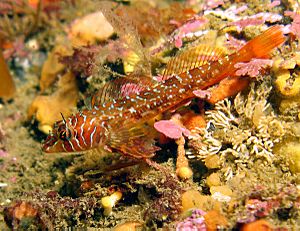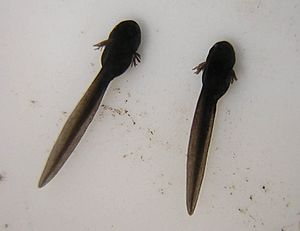Aquatic animal facts for kids
An aquatic animal is any animal that lives in water for most or all of its life. This includes animals with backbones (like fish) and those without (like jellyfish). Many insects, such as mosquitoes, mayflies, dragonflies, and caddisflies, start their lives as aquatic larvae. Later, they grow into winged adults that live on land.
Aquatic animals have different ways of breathing. Some breathe air, while others get oxygen directly from the water. They might use special body parts called gills, or even absorb oxygen through their skin. Scientists often group natural environments and the animals living in them as either aquatic (water) or terrestrial (land).
What Are Aquatic Animals?
The word "aquatic" describes animals that live in water. This can be either fresh water (like rivers and lakes) or salt water (like oceans and seas). However, animals living in salt water are often called marine animals.
Aquatic animals, especially those in freshwater, are very important to protect. Their homes can be fragile and easily harmed. These animals face dangers like overfishing, harmful fishing methods, water pollution, and climate change. Protecting their watery homes helps keep these amazing creatures safe.
Air-Breathing Aquatic Animals
Not all aquatic animals breathe underwater. Some, like manatees and whales, are mammals that live in water but must come to the surface to breathe air. These animals cannot survive on land. Other mammals, like river otters and beavers, spend a lot of time in water but can also live on land. They are called semiaquatic.
Amphibians, such as frogs, are another interesting group. Most amphibians start their lives in water as larvae (like tadpoles). As they grow, they move to land as adults. However, they often return to the water to mate and lay eggs.
Some fish have also developed special ways to breathe air. This helps them survive in water that doesn't have much oxygen. Examples include the Arapaima and walking catfish.
Most mollusks (like snails and clams) use gills to breathe underwater. But some freshwater mollusks, like the Planorbidae snails, have a lung instead. A few, like Ampullariidae, can even have both gills and a lung!
See also
 In Spanish: Animales acuáticos para niños
In Spanish: Animales acuáticos para niños





